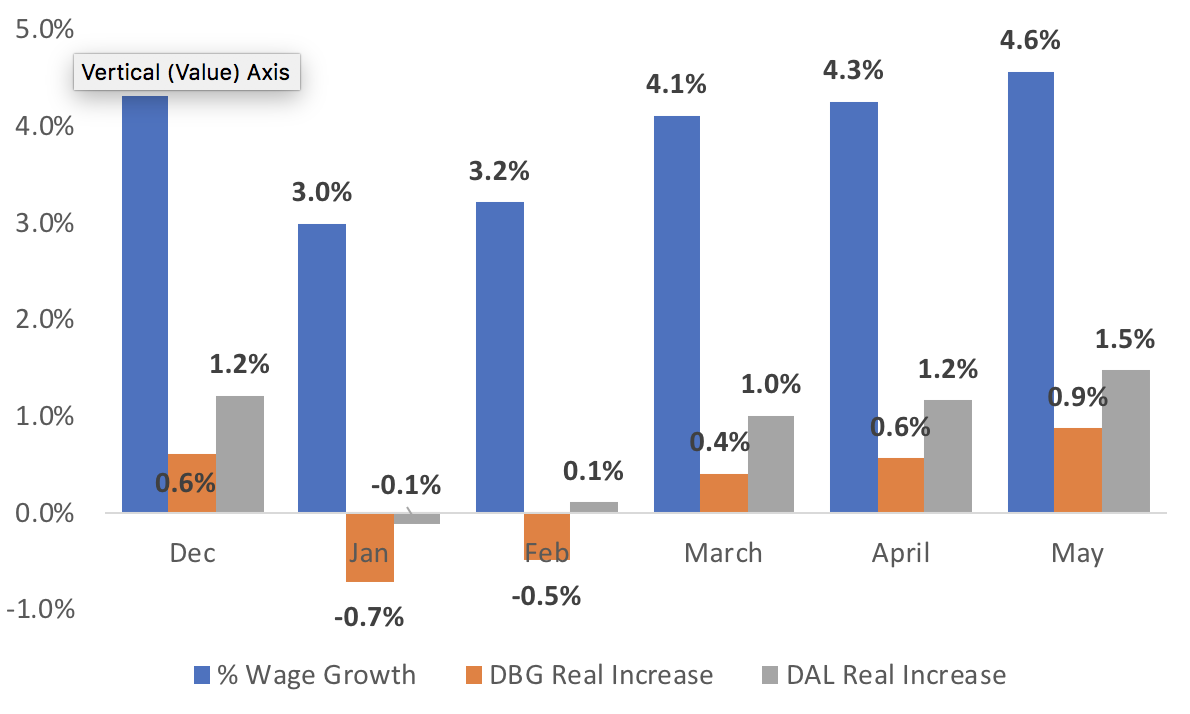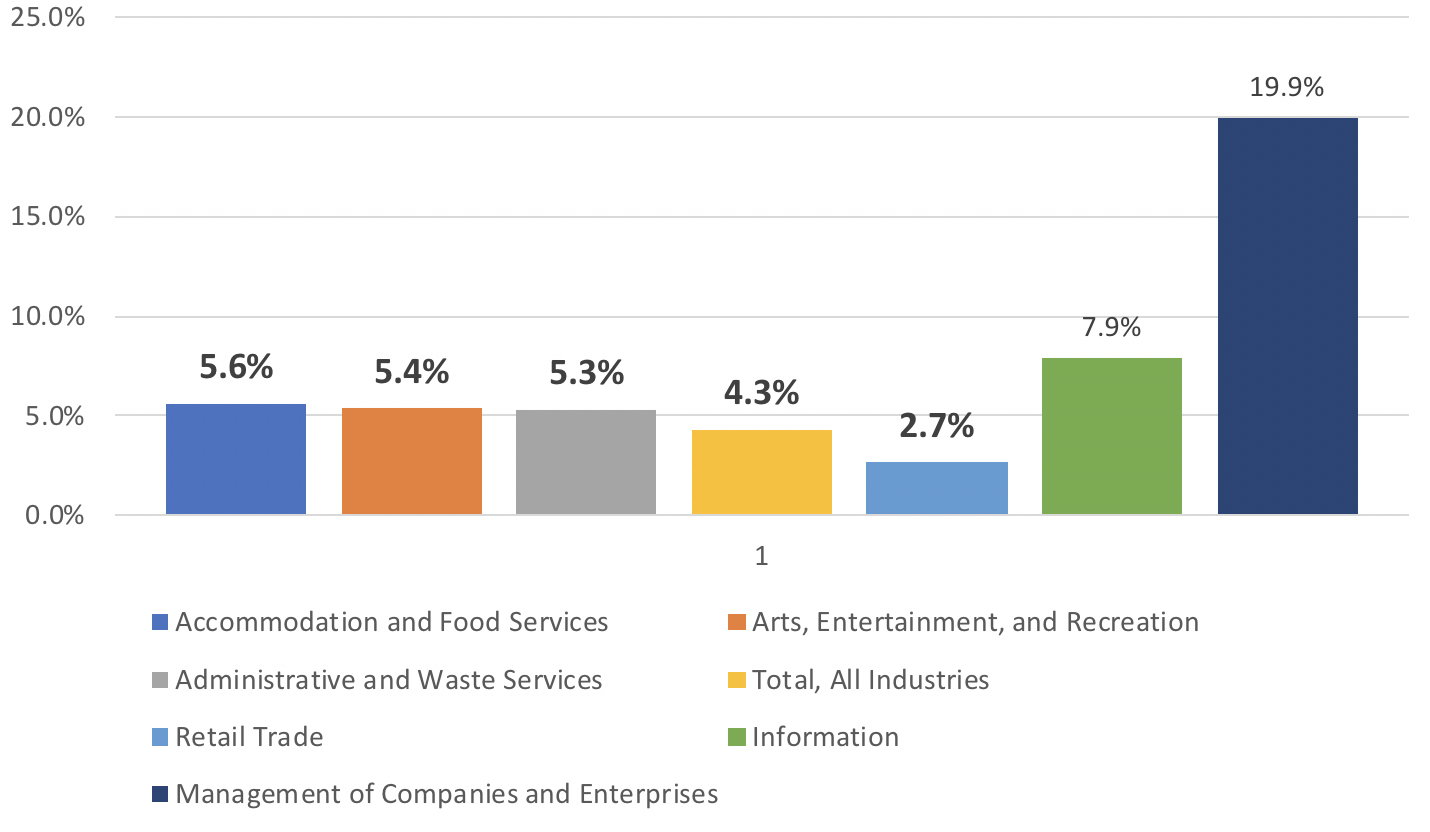A Deeper Look at Wage Gains in Colorado
Colorado’s economy continues to add jobs and cut the number of workers who are unemployed. The most recent jobs report for Colorado shows employers added 7,700 jobs between April and May, bringing the total to 2.7 million jobs. What does this mean for wage gains in Colorado?
Related: New Data Show Colorado Wages Struggle to Keep Pace with Inflation
The unemployment rate for May was 2.8 percent, down from 2.9 percent in April, and near the record low of 2.3 percent set last June. A broader measure of unemployment that includes those without jobs, but who are not actively looking for one, is also down to 6.1 percent, the fourth lowest in the U.S.
Average wages for Colorado workers are finally starting to pick up, something we would expect with such low unemployment. Between May 2017 and May 2018 average hourly wages increased from $27.16 to $28.40, an increase of $1.24 or 4.6 percent. Wages increased in March, April, and May, even after adjusting for inflation.
However, adjusting for inflation got a bit more complicated in January when the Bureau of Labor Statistics (BLS) revised the consumer price index for Colorado based on a different geographic area. The new Denver-Aurora-Lakewood (DAL) consumer price index is focused more intensively on the Denver metro area and reported lower inflation than the previous Denver-Boulder-Greeley (DBG) index.
The new DAL consumer price index, which will be published bimonthly rather than semiannually as the old DBG index, shows in March 2018, prices were 2.2 percent higher than in March 2017. Using the DAL index, state economists project prices will be up 3.1 percent in 2018. This is lower than inflation under the DBG index, which showed prices up 3.7 percent in the second quarter of 2017 (the most recent data available).
Table 1 below shows average wages, after adjusting for inflation using either index, were up in March, April, and May after more mixed results in the first quarter of 2018. Plus, the increases were greater in each month. This is positive for Colorado’s workers and hopefully a sign that wage gains will continue in the future.
Table 1: Growth in Colorado Average Hourly Wages After Adjusting for Inflation – 2017-2018

But these data are based on average hourly wages for all jobs in the state. As we reported in our Guide to Economic Mobility, the share of Coloradans working in low-wage jobs increased by 69 percent since 2004, and the number of low-wage jobs continues to grow. About 1 in 4 of the 51,800 jobs added in Colorado between May 2017 and May 2018 were in the accommodations and food services, arts, entertainment and recreation, and retail trade industries, all of which tend to pay lower wages.
Related: Overtime Hub
Average weekly wages for all industries increased by 4.3 percent between the fourth quarter of 2016 to the fourth quarter of 2017. Interestingly, wage gains were even stronger in several of the industries that pay low wages, illustrated in Table 2 below. Recent increases in state and local minimum wages are boosting the earnings of workers in these low-wage industries and putting pressure on employers to increase pay for those workers earning slightly more than the minimum wage.
However, the two largest increases in wage growth occurred in the higher paying industries: information and management of companies and enterprises. Nationally, most of the growth went to those jobs at the higher end with limited growth in “production and nonsupervisory” jobs.
Table 2: Increase in Average Weekly Wages by Industry – Q4 2016 – Q4 2017

Source: Bell calculations using Quarterly Census of Wages and Employment, Q4 2016 and Q4 2017
According to the legislature’s economists, in 2017, Colorado wage and salary employees out-earned similar workers in other states, adding 5.2 percent compared to less than 5 percent nationally. But total Colorado wages and salaries are growing more slowly than the 5.6 percent combination of employment growth (2.2 percent) and core inflation using the DBG index (3.4 percent). In other words, broad forces such as increases in the total number of jobs and inflation are accounting for more of the growth in total wage and salary income than wage gains.
While these data show wages are starting to rise, we have a lot of work to do to ensure our state’s economic growth is shared more broadly among all Coloradans and workers’ wages grow along with the growth in the overall economy.
